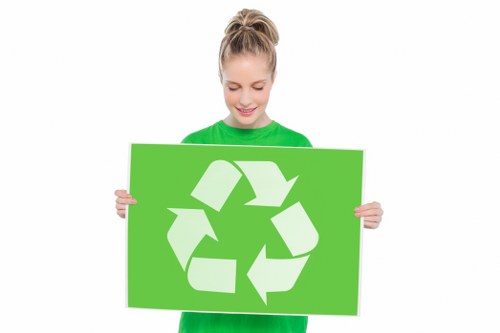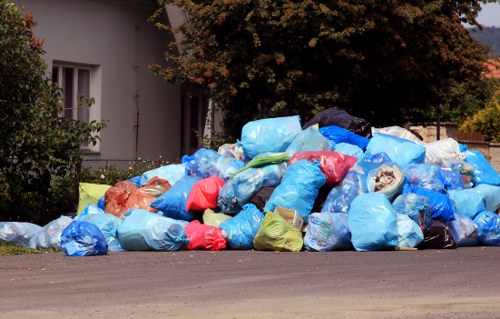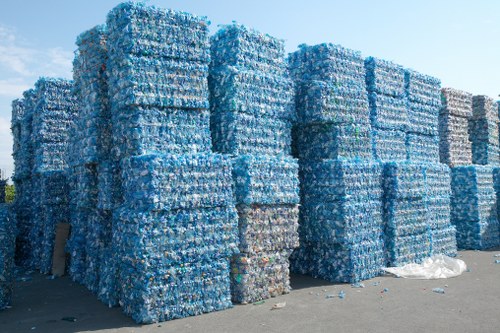Waste Disposal in Regents Park

Proper waste disposal is a crucial aspect of maintaining the beauty and cleanliness of Regents Park. As one of London’s most beloved green spaces, the park attracts millions of visitors each year. Ensuring that waste is managed effectively helps preserve the environment and provides a pleasant experience for everyone.
Regents Park offers various facilities to manage waste, including strategically placed bins and recycling stations. However, understanding the best practices for disposing of different types of waste can enhance these efforts. Whether you’re a local resident or a visitor, knowing how to contribute to waste management is essential.
In this article, we will explore the waste disposal systems in Regents Park, discuss the importance of proper waste management, and highlight the nearby areas that also prioritize environmental sustainability.
Importance of Proper Waste Disposal

Effective waste disposal is vital for several reasons. It helps prevent pollution, protects wildlife, and maintains the aesthetic appeal of the park. Improper waste management can lead to littering, which not only mars the natural beauty but also poses risks to animals that may ingest or become entangled in waste materials.
Moreover, proper waste disposal contributes to public health by reducing the spread of diseases. Garbage left unattended can become a breeding ground for pests and harmful bacteria. By disposing of waste correctly, we can ensure a healthier environment for everyone.
Additionally, responsible waste management supports recycling efforts, reducing the amount of waste that ends up in landfills. Recycling materials like paper, plastic, and glass conserves resources and lowers the carbon footprint associated with waste production.
Waste Disposal Facilities in Regents Park

Regents Park is equipped with a comprehensive waste disposal system designed to cater to the needs of its visitors. The park features numerous recycling bins and general waste containers placed at regular intervals. These facilities are clearly marked to help users distinguish between recyclable and non-recyclable materials.
In addition to standard bins, the park has designated areas for specific types of waste, such as glass disposal and organic waste. These specialized containers make it easier to sort waste correctly, promoting effective recycling and composting initiatives.
The park management also conducts regular waste collection and maintenance to ensure that bins do not overflow and that the park remains clean and inviting. Volunteers and staff work together to monitor waste disposal areas, encouraging visitors to follow proper disposal practices.
Types of Waste and How to Dispose of Them
Recyclable Materials

Recyclable materials include paper, cardboard, plastic bottles, glass containers, and aluminum cans. These items should be placed in the designated recycling bins found throughout Regents Park. Recycling helps conserve natural resources and reduces the need for new materials.
It’s important to rinse and clean recyclable items before disposing of them. This prevents contamination and ensures that the materials can be effectively processed and reused.
Additionally, separating different types of recyclables can improve the efficiency of recycling operations. For example, glass should be placed separately from plastic and paper to facilitate easier sorting and processing.
Non-Recyclable Waste

Non-recyclable waste includes items like food wrappers, certain plastics, and general household trash. These should be disposed of in the general waste containers available in the park. Proper disposal of non-recyclable waste helps maintain cleanliness and prevents littering.
Avoid littering by keeping an eye on your waste and using the nearest bin. If you’re visiting with a group, consider bringing additional bags to collect any waste before disposing of it properly.
Remember that even small actions, like picking up a piece of litter, can make a significant difference in keeping Regents Park pristine for everyone to enjoy.
Community Involvement and Initiatives
Community involvement plays a vital role in the success of waste disposal efforts in Regents Park. Various initiatives encourage residents and visitors to participate in keeping the park clean.
- Clean-Up Events: Regular clean-up drives are organized, where volunteers come together to collect litter and maintain the park’s beauty.
- Educational Programs: Workshops and informational campaigns educate the public about the importance of proper waste disposal and recycling.
- Adopt-a-Bin Programs: Local businesses and community groups can adopt specific bins, ensuring they are regularly emptied and maintained.
These initiatives not only improve waste management but also foster a sense of community and shared responsibility among participants.
Challenges in Waste Disposal
Despite the robust waste disposal systems in place, Regents Park faces several challenges. High visitor numbers, especially during peak seasons, can lead to overflowing bins and increased littering. Ensuring that waste disposal facilities are adequately stocked and maintained is an ongoing effort.
Another challenge is educating visitors about the correct disposal methods. While many people are aware of the importance of recycling, understanding the specifics of what can and cannot be recycled requires continuous outreach and awareness.
Additionally, managing non-recyclable and hazardous waste, such as batteries and electronics, poses specialized challenges. Providing appropriate disposal options for these items is essential to prevent environmental contamination.
Nearby Areas and Their Waste Disposal Features
Regents Park is surrounded by several areas that also prioritize effective waste management. Understanding the waste disposal systems in these nearby regions can provide a comprehensive view of environmental efforts in the area.
- Bayswater: Located just west of Regents Park, Bayswater offers numerous recycling points and participates in local clean-up initiatives.
- Kensington: Known for its upscale neighborhoods, Kensington maintains high standards for waste disposal, including separate bins for recycling and compost.
- Marylebone: Marylebone provides specialized disposal facilities for hazardous waste, ensuring safe handling of such materials.
- St. Johns Wood: This area emphasizes community involvement with regular waste management workshops and events.
- Lisson Grove: Lisson Grove supports waste reduction through initiatives like bulk waste collection and recycling drives.
- Primrose Hill: Adjacent to Regents Park, Primrose Hill offers additional recycling stations and organizes park clean-up days.
- Maida Vale: Maida Vale focuses on sustainable waste practices, including composting organic waste from local households.
- Westminster: Westminster maintains extensive waste disposal networks, ensuring efficient collection and processing of waste materials.
- Notting Hill: Notting Hill promotes recycling through public awareness campaigns and accessible recycling bins.
- Camden Town: Camden Town features innovative waste disposal solutions, such as smart bins that monitor waste levels in real-time.
Future Plans for Waste Management in Regents Park
The management of Regents Park is committed to enhancing waste disposal systems to meet future demands. Plans include expanding recycling facilities, introducing more educational programs, and incorporating advanced technologies to monitor and manage waste more effectively.
One such initiative is the installation of smart waste bins equipped with sensors that alert maintenance teams when they need to be emptied. This technology aims to prevent overflowing bins and ensure that waste is collected promptly.
Additionally, there are plans to increase the number of composting sites within the park to manage organic waste more sustainably. By converting organic materials into compost, the park can reduce the volume of waste sent to landfills and support gardening and landscaping efforts within the park.
Tips for Visitors on Waste Disposal
Visitors to Regents Park can contribute to effective waste management by following a few simple tips:
- Use Designated Bins: Always dispose of waste in the appropriate bins to ensure proper handling and recycling.
- Separate Your Waste: Sort recyclables from general waste before disposing of them.
- Bring Reusable Items: Use reusable water bottles, bags, and containers to reduce the amount of waste you generate.
- Participate in Clean-Up Activities: Join local clean-up events to help maintain the park’s cleanliness.
- Educate Yourself: Learn about the types of waste and how to dispose of them correctly.
By adopting these practices, visitors can play an active role in preserving the environment and keeping Regents Park clean for everyone to enjoy.
Conclusion
Waste disposal in Regents Park is a shared responsibility that requires cooperation from both the management and the public. By utilizing the available facilities, participating in community initiatives, and adhering to proper disposal practices, everyone can contribute to a cleaner and more sustainable park.
As we look to the future, continued efforts to improve waste management systems and educate the public will be essential in maintaining the park’s beauty and environmental health. Together, we can ensure that Regents Park remains a cherished green space for generations to come.
Frequently Asked Questions
- Q1: What types of waste can be recycled in Regents Park?
A1: In Regents Park, you can recycle paper, cardboard, plastic bottles, glass containers, and aluminum cans. Make sure to place them in the designated recycling bins and rinse them if necessary.
- Q2: Where are the recycling bins located in Regents Park?
A2: Recycling bins are strategically placed throughout Regents Park, typically near entrances, picnic areas, and popular walking paths. Look for bins marked with recycling symbols to ensure proper disposal.
- Q3: How can I dispose of hazardous waste in Regents Park?
A3: Hazardous waste, such as batteries and electronics, should be taken to specialized disposal facilities. Please contact the park management or visit local waste management centers for proper disposal methods.
- Q4: Are there any initiatives to reduce waste in Regents Park?
A4: Yes, Regents Park organizes regular clean-up events, educational workshops, and adopt-a-bin programs to reduce waste and promote recycling among visitors and local residents.
- Q5: How can I get involved in waste management efforts in Regents Park?
A5: You can participate in community clean-up events, volunteer for park maintenance, or join local environmental groups that work towards improving waste management in the area.
